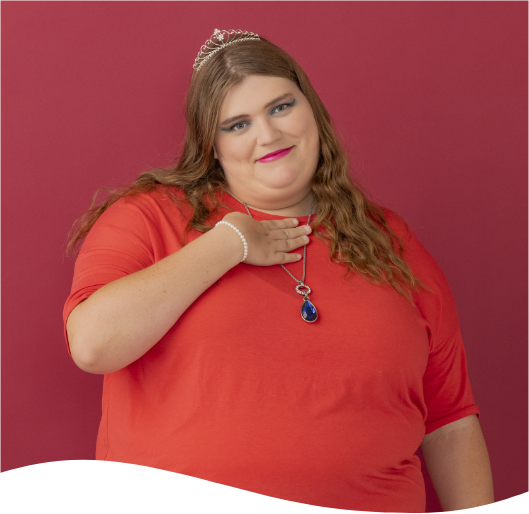The Autism experience.
Understanding Autism.
What is Autism Spectrum Disorder (ASD)?

Autism is characterized in the American Psychiatric Association’s Diagnostic and Statistical Manual (DSM-5), which is used by clinicians to diagnose Autism by: Persistent differences in communication, interpersonal relationships, and social interaction across different environments. What this can look like:
- Being nonverbal, nonspeaking, or having atypical speech patterns, having trouble understanding nonverbal communication, difficulty making and keeping friends, difficulty maintaining typical back-and-forth conversational style.
Restricted and repetitive behavior, patterns, activities and interests. What this can look like:
- Repeating sounds or phrases (echolalia), repetitive movements, preference for sameness and difficulty with transition or routine, rigid or highly restricted and intense interests, extreme sensitivity to, or significantly lower sensitivity to, sensory stimuli.
For more information about screening and diagnosis, click here.
Autism is prevalent across the world, although tracking rates can vary due to differences in reporting. In 2021, the Centers for Disease Control and Prevention (CDC) issued its Autism prevalence report.
- The report concluded that the prevalence of Autism had risen to 1 in every 44 – more than twice as great as the 2004 rate of 1 in 125.
- Children who receive an Autism diagnosis by age 4, are fifty times more likely to receive services.
- The 2021 report noted that more White and Black children were identified with Autism than Hispanic children.
- The 2020 report was the first to indicate that, on average, White and Black children were equally as likely to have a diagnosis by the age of 8 years, in the sample studied by the CDC.
- Previous studies have shown, that Children of Color may still receive their diagnoses later than White children. Stigma, lack of access to healthcare services due to non-citizenship or low-income, and non-English primary language are potential barriers to the early identification of Hispanic children and children of color with Autism.
- Currently, boys are also approximately 4 times more likely to have an Autism diagnosis than girls of the same age.
- However, recent research suggests that girls may not display characteristics of Autism in the same way as boys and might go undiagnosed because of their different presentation.
There is no known single cause for Autism, but it is generally accepted that it is caused by differences in brain structure or function. Brain scans show differences in the shape and structure of the brain in people with Autism compared to in neurotypical development. Researchers do not know the exact cause of Autism but are investigating a number of theories, including the links among heredity, genetics, and medical problems. There has been misinformation about the cause of Autism. It is not caused by vaccines or due to parenting style or nutrition.
In many families, there appears to be a pattern of Autism or related disabilities, further supporting the theory that the disorder has a genetic basis.
While no one gene has been identified as causing Autism, researchers are searching for irregular segments of genetic code that people with Autism may have inherited. It also appears that some people are born with a susceptibility to Autism, but researchers have not yet identified a single “trigger” that causes Autism to develop.
Other researchers are investigating the possibility that under certain conditions, a cluster of unstable genes may affect brain development in an unexpected way, resulting in Autism. Still other researchers are investigating complications during pregnancy or delivery as well as environmental factors such as viral infections, metabolic imbalances, and exposure to chemicals.
The DSM-5 is used by clinicians to diagnose Autism and the features of Autism are described in this document. The DSM-5 criteria require that the core features of Autism be present in early childhood. However, for some children, the symptoms may not fully manifest until social demands exceed the person’s capacity to cope with them. In addition, challenges may be masked by learned coping strategies and support. To learn more about receiving an Autism diagnosis, visit our Screening & Diagnosis page.
Autism tends to occur more frequently than expected among individuals who have certain medical conditions, including fragile X syndrome (FXS), tuberous sclerosis, congenital rubella syndrome (CRS), and untreated phenylketonuria (PKU). Some harmful substances ingested during pregnancy also have been associated with an increased likelihood of Autism.
Signs and characteristics.
Autism impacts an individual throughout the lifespan. However, research shows that early diagnosis can lead to improved quality of life. The behaviors of Autism may be apparent in infancy, but they usually become clearer during early childhood. As part of a regular health visit, your child’s doctor should perform developmental screenings focused on Autism. This screening is recommended at ages 18 and 24 months for all children.
Your doctor will encourage you to ask specific questions about your child’s developmental progress. The National Institute of Child Health and Human Development (NICHD) developed a detailed list of behaviors, listed in four categories: communication, social behavior, stereotyped behavior, and other behavior. Additionally, the Centers for Disease Control and Prevention (CDC) developed a list of Signs and Symptoms, which can be found here.
Connect with us.
Reach out to us here at the South Carolina Autism Society for information and resources.




